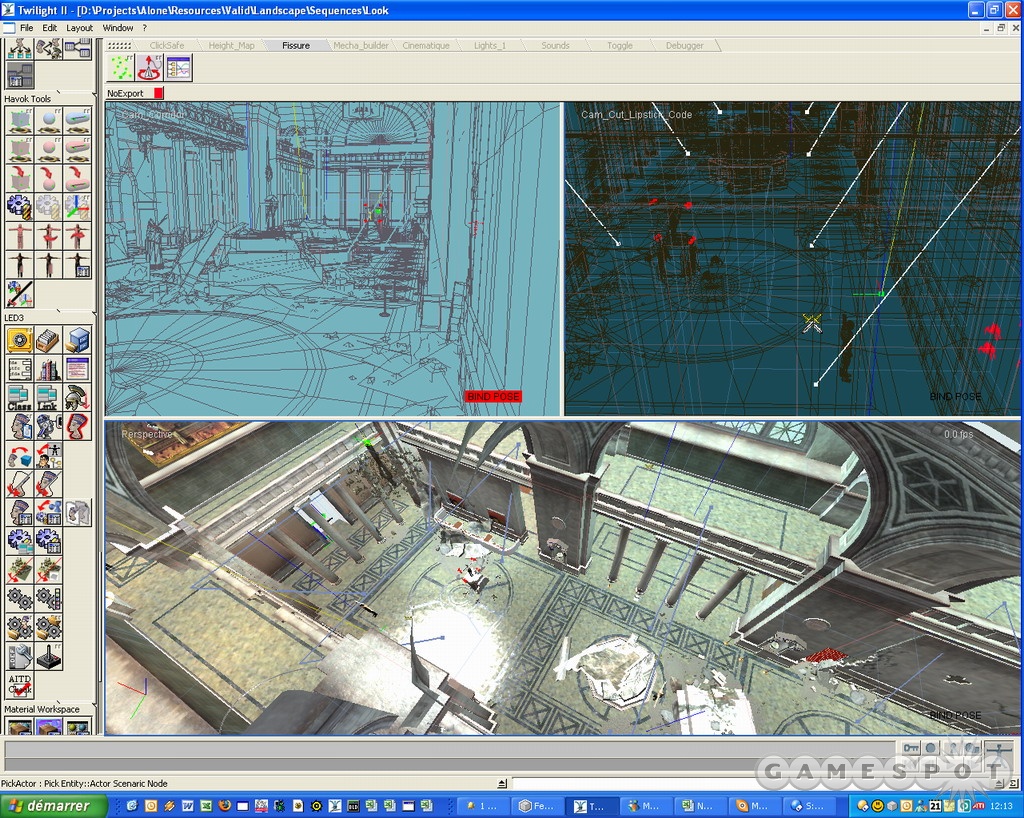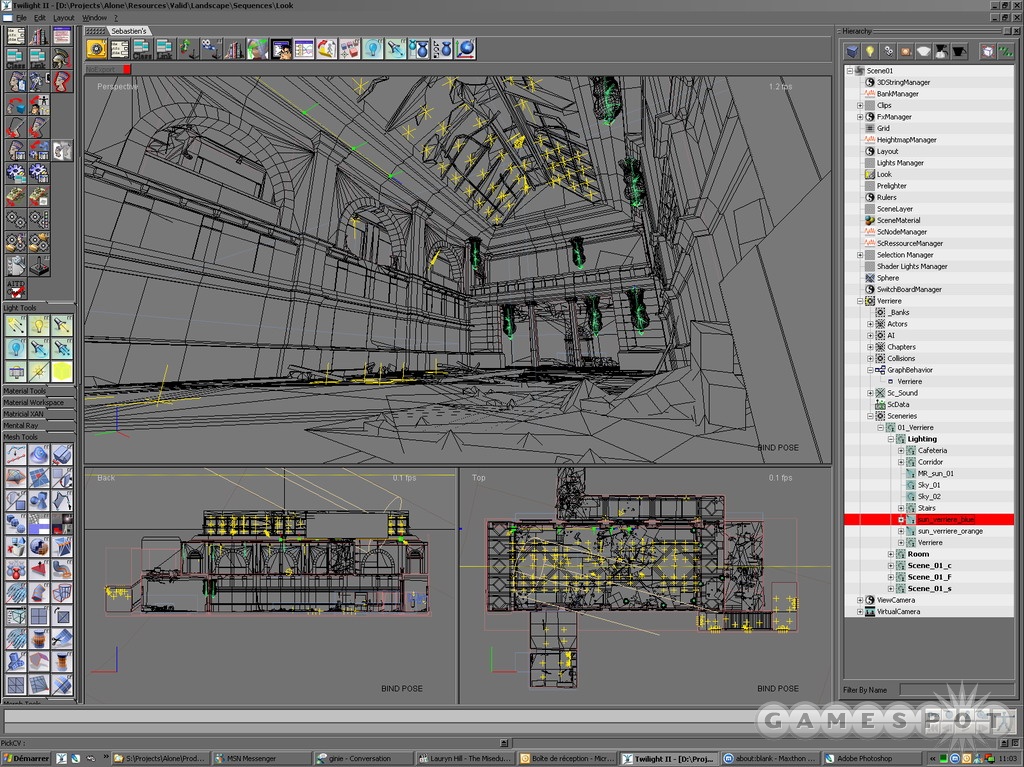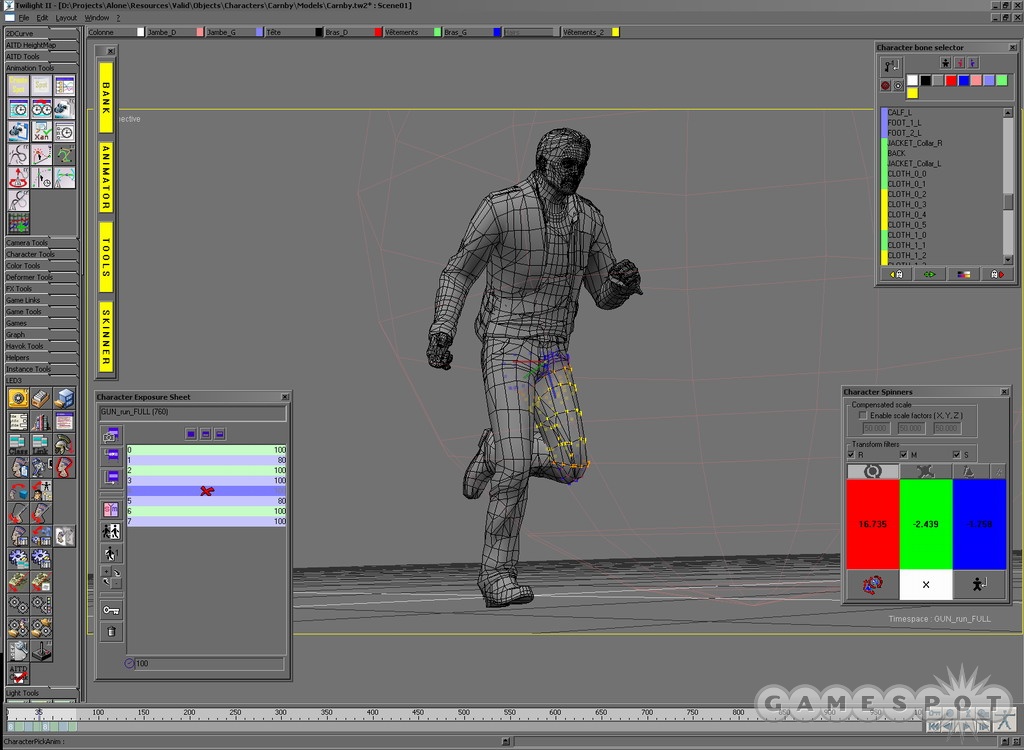Alone in the Dark Q&A - Technology to Make a Scarier Horror Game
Game director David Nadal discusses some of the advanced technology that will bring this new Alone in the Dark to life.
The Alone in the Dark series helped to establish the popular horror survival genre as we know it today. With its emphasis on creepy third-person action adventure, exploring dark environments, and battling nightmarish monsters, the original Alone in the Dark, published in 1992, defined many of the games to follow it. And now Atari and developer Eden Studios are looking to reinvent the franchise with a brand-new Alone in the Dark.

Like the original game, this new Alone in the Dark will feature protagonist and private investigator Edward Carnby. However, the original game was set in the 1920s, and the new Alone in the Dark is set in modern-day New York City. Playing as Carnby, you'll explore Central Park and its surrounding metropolitan area. It should all look fantastic, as Eden is using enhanced versions of the technology used to power its recent game, Test Drive Unlimited, which created a virtual version of the island of Oahu to race around. If Eden could create an authentic version of Hawaii, it'll be interesting to see what it can do with New York City. To learn more about the game's technological underpinnings, we caught up with game director and Eden studio manager David Nadal.
GameSpot: We understand that the Twilight engine that powers Alone in the Dark is derived from the same technology behind Test Drive Unlimited. How is Eden Studios using the technical strengths of a game like TDU and applying them to Alone in the Dark?
David Nadal: In fact, Alone in the Dark relies on our Twilight engine. This engine has been evolving since our first games and is about to finish a third big evolution. It's the backbone for all the games we do at Eden. Test Drive was based on the previous version of this engine, and Alone in the Dark is built on an evolved version of Twilight. Each game adds its proper evolution to the engine, and this is made available to the following games. So each game capitalizes [on] previous experiences through our engine.
The biggest strength of Twilight is that it includes an integrated tool that supports the whole needs for the teams, from level building, cinematic, visual effects, integration of art resources, interactive music and animations, and so on. All of this is directly linked to the final target, which can be a PC, an Xbox 360, or a PS3. When you make a change in the world you are building, you can see instantaneously the result of what you are doing in game. This helps greatly to have an efficient production process and building of the game itself.
GS: As a follow-up, we imagine that the technology that let Test Drive Unlimited render huge outdoor areas will come in handy for a game that models all of New York City's Central Park.
DL: When we created TDU we added a tool in Twilight that we called "world builder," which allows us to render the exact topology of the environment using photos, satellite data, and digital elevation models. This tool allows us to generate the exact landscape mesh, which we can refine as well as add roads automatically based on road networks' vector data. For TDU, the precision we had for the huge outdoor areas was a 10-meter (33-foot) precision. For Alone in the Dark, the tools allowed us to go to up to a 50-cm (1.5-foot) precision!
GS: What other specific additions and changes have been made to the engine since Test Drive Unlimited? How do they add to the game?
DL: The rendering engine is the biggest evolution we did. TDU is in huge, open, vast environments with sunlight as the main source of light. Alone in the Dark is in the dark and has high-detailed environments that need lots of light possibilities. We've built a completely specific rendering engine, with real-time "photographic" features such as real-time postproduction effects, depth of field, high dynamic range lighting, volumetric fog, light shafts, real-time dynamic and multiple lights, and the like, which allows us to have a unique cinematographic look for Alone.
For animation, we've built a tool that allows us to combine and blend animations together. This helps us have the possibility to, for example, have Carnby manipulate different objects, with different hands, in different contexts, without doing thousands of specific animations. Without this tool, we wouldn't have been able to have the richness of interaction possibilities now available in the game.

In terms of physics, since our game is heavily based on interaction with objects and with your environment, physics is key, so this implied a more advanced physics management than on TDU.
For artificial intelligence, we wanted an advanced, sophisticated and intelligent AI for the game, so we've teamed up with Kynogon to have specific features: advanced pathfinding, several means of detection, realistic regrouping, automatic detection of dynamic collisions, and so on.
For cinematics, we developed an advanced cinematic tool, allowing us complex camera moves, and integrating the middleware Face FX for detailed facial expressions. This is for the narrative intensity during the game as well as bringing emotions and credibility to the characters you encounter.
And for music, we've developed a specific tool that allows us to have interactive scoring music while the player plays the game, whatever he or she does in terms of action. The whole score is cut into several pieces of loops and levels (violins, bass, trumpets, and the like) and are activated when the sound designers want them to activate. For example, music can activate based on camera movement, the action of the player, the action in the scene, the entering of a zone, and more. The idea is that when the player plays the game, the music flows in the rhythm of the player's actions, also meaning that the music will adapt if the player goes back to where he came from (where in other games, the same music heard before will start playing again). This system attributes to the immersion we want for the player.
These features can be used not just for Alone in the Dark, but also for all the other games we will be doing at Eden in the future.
Lighting the Dark
GS: Tell us a bit about the game's lighting system, how it works, and how it will add to the game. 
DL: Since light is an important element of the game, we've developed in the rendering engine the possibility to have as much real-time dynamic lights as we wish. Through a technique called "deferred," the light calculations are done only on what is displayed on the screen itself and not all the surface covered by the light in the 3D scene. The cost of the light is therefore proportional to the surface of the screen affected by the light, whereas in traditional rendering engines, the cost is exponential depending on the number of lights activated at the same time, meaning that you could only have a limited amount of real-time lights and therefore must add static lights to light the scene.
With the rendering engine for Alone, you'll be able to have a full scene in Central Park where you'll have the lamp projectors, the car lights, and your flashlight, and you'll use emergency flares to light some dark zones, all of this with real-time lights.
GS: We understand that a strong part of the gameplay will revolve around how Carnby and his enemies interact with the environments, either destroying them or picking up objects to use as tools and weapons. Tell us about how the Twilight engine's physics abilities will help make the environments interactive.
DL: Our game engine is based on Havok physics, and we've worked hand in hand with the Havok team to really push the limits of what we can do for the game's needs. From breaking objects and gathering the broken pieces, from rag-doll and physics-based mass destructions and explosions of small objects to huge buildings, from sound and visual effects of elements directly linked to physics, we've really pushed several possibilities of using physics in the game. We also use the physics to have precise targeting for the manipulation of objects. We've even developed our own physics solver for the ropes and cables in the game, as well as the for the cloth handling.
GS: We also understand that drivable vehicles will be a big part of the game. Will much of the driving gameplay resemble that of Test Drive Unlimited? What enhancements and tweaks have been made to driving in the new game?
DL: The car physics in Test Drive is a pure simulation, complete, really adapted to the racing genre. What I wanted for Alone in the Dark is pure entertainment, with burns, big powerslides--as realistic as a movie can be. So we decided to only reuse the base of the TDU driving code and develop something adapted to our need on top of it. The driving of the vehicles is not the heart of the game, but it will be present like any other object you can interact with, like in the real world.
GS: We've heard that procedural fire effects will play an important role in the game, as a possible weapon in Carnby's battle with evil. Yet we've also seen videos of Carnby trapped in burning buildings on the verge of collapse. How will fire be created and spread by the Twilight engine without being too troublesome or difficult to navigate?

DL: We've put into place a generic fire propagation engine that allows us to have logical fire propagation on all inflammable objects and surfaces, as well as fire propagation from one element to another. The fire dynamics detects zones of simulated heat and degree of inflammability and propagates following physical logic. The simulation of the fire is linked also to the physics engine; therefore, when an object or environment is being consumed by fire, it will break following the physics constraints given, show the different textures linked to the phases, and will follow the logical destruction until all is in ashes.
GS: Finally, is there anything else you'd like to add about the technology behind Alone in the Dark, or anything else about the game in general?
DL: Even if we are really happy with what we have achieved techwise, even if nothing would have been possible without this tech, the most important thing for us is that Alone in the Dark will really be a new experience, a big piece of entertainment.
GS: Thank you, David.
Got a news tip or want to contact us directly? Email news@gamespot.com
Join the conversation